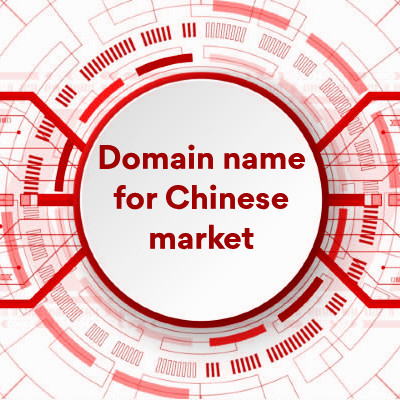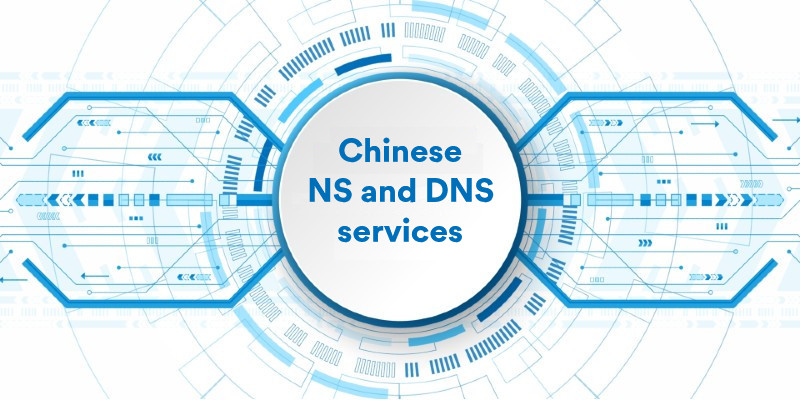


Domain name for the Chinese market
Background to Chinese domain name
Here are a few terms to help you when reading this paper;
As you may be aware, there are two main parts to a domain name you need to consider when making a purchase: -
- TLD (Top Level Domain) is the part domain name that comes after the "DOT", e.g. .com , .net, .etc.
- Domain is that come before the TLD. ", e.g., "mydomain" in mydomain.com
- The Domain name is the domain + TLD., e.g., mydomain.com
NS vs DNS;
- Name server (NS): A server available to the internet hosting the Domain Names Service (DNS)
- Domain Name Service (DNS) – Database containing your DNS records, e.g., IP address of your website.
Often, NS and DNS are used to mean the same thing. The difference in China is that many local NSs are running in multiple locations, holding copies of the DNS databases for all domains purchased in China. This helps considerably by keeping response time fast with over a billion internet users across a large country.
When marketing and selling to the Chinese market, you need your domain name to respond quickly and not fail to be found.
Using the national Chinese name servers for your domain name DNS records will give the fastest response times in China for locating your domain name and remove the Domain Name not found error. For more detailed information, please see the
How do Name Servers (NS) and DNS operate in China
Ideas for your Chinese domain name
- Using an existing company/ brand name
If your company, brand, product, etc., name already has traction in China, then the decision is straightforward: build your domain around the name already known in China.
- Using a keyword
If you do not have an established company/brand name in the Chinese market, you can use keywords based on your industry or services. The starting point would be the keywords, like the name of the market selector. Review your current keywords in Google. Check if any of these words are meaningful to the Chinese market.
- Using a brand/company name or keyword in Pinyin
Pinyin, the simplest expernation, is written in Chinese with Latin (English) characters, e.g.
“Panda” in Chinese is 熊猫, in Pinyin: Xiogmao
Chinese people use Pinyin to type on mobiles, tablets, PCs, etc.
Today, Pinyin words are often used in domain names. Baidu, the Chinese search engine, means “a hundred times” or “countless times”.
Translating your company, brand, product, etc., name into Pinyin may give you a meaningful domain.
You can use Chinese characters in your domain, e.g., 熊猫, but it is not recommended as you restrict access to your domain to people who can type characters. While you have been able to use Chinese characters in domain names for many years, I have yet to see this used in China as the primary domain for a business.
Please have Pinyin word(s) reviewed to ensure they do not have secondary meanings in Chinese. (Google had this problem when translated into Chinese. The direct translation is “rice farmer.” They overcame this problem by changing Google's pronunciation for the Chinese market; therefore, the translation of Google into Chinese changed.)
- Add the county code to the domain
Given that the goal for a domain is to be as short and memorable as possible, try adding the country code to the domain.
I have seen this increasingly used in China.
This also allows you to use shorter domains given that the practice is not used extensively at the time of writing, e.g.
123.co to 123cn.co
123cn.co example was available at the time of writing – 02 January 2025
Using this practice for the Chinese market, you use the same format as Pinyin: Pinyin words are 3 to 5 Latin characters long. Simple to remember, simple to spell.
- Chinese third-party services
Both B2B systems, e.g., Alibaba, B2C systems, e.g., TMall, and Chinese social media, e.g., WeChat, all need an account name when set up, which is usually used in search criteria. We recommend that the domain used for the Chinese market be used consistently throughout all Chinese systems.
To that end, we recommend you check within these systems to see if your planned name for your domain is not already used.
Please note: Most third-party services do not allow the account name to be changed once it is set up. You must delete the account and start again, including any set-up fees.
- Short names for the domain are recommended
If possible, please keep the name short or recognisable to Chinese businesses and people. Many English words, such as audio and video, are finding their way into the Chinese language.
English is the first language spoken overseas in China and is taught at all levels of schooling. Simple English words taught early in school should be considered.
- Subdomain of existing domain
Using a subdomain on your existing domain is an option, e.g., newkeywork.mydomain.com
You cannot use Chinese Name Servers unless your domain has been purchased from a Chinese supplier.
Please see the server options below for the Asia option, which will improve your DNS performance in China.
- TLD (Top level domain) name
Using a different TLD for your Chinese market is better than using a subdomain.
The other popular TLD is China (01 January 2025): .com, .co, .shop, .xyz, .design, .cloud, wiki, icu.
There is also .cn, .com.cn, .中国. As of 2022, these TLDs are only available to Chinese companies and people. This is the same as in many countries, e.g., .uk, available to British companies and people. Please see
Chinese top level domains (TLDs)
For more information on how Name Servers (NS) and DNS operate in China;
How do Name Servers (NS) and DNS operate in China
Access to China has to China domain name and DNS servers in Mainland China;
Access to China, Chinese NS and DNS services
Last modified: Version 3.4 - 08 January 2025














